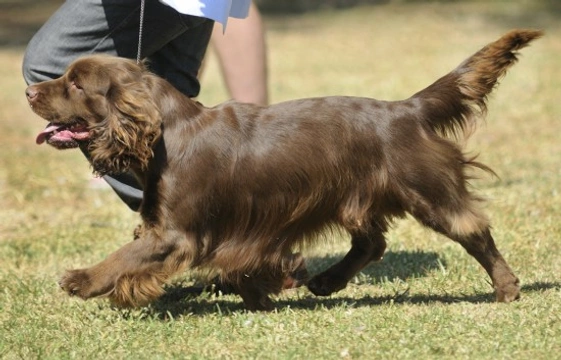
Sussex Spaniel health and longevity
The Sussex spaniel is a spaniel that originated in Sussex, as the name implies. They are small, compact and low to the ground, and are vaguely similar in appearance to another of our native breeds, the Clumber spaniel. Originally used as hunting dogs in the Hastings area of Sussex as far back as the 18th century, the breed is classed as one of our native endangered breeds by The Kennel Club, and they nearly fell into extinction entirely during World War Two.
The majority of dogs of the breed are actually rather surprisingly owned in the USA rather than the UK, but concerted efforts to raise the breed’s profile and promote their ownership here in their home country are leading to a rise in their numbers. The winner of the prestigious Best in Show award at the 2009 Westminster Kennel Club show was a Sussex spaniel, which helped to raise the breed’s profile even further.
While they share all of the best traits of spaniel type dogs and due to their small size, make great pets for people who live in small or large homes, the Sussex spaniel is prone to suffering from a range of genetically inherited health conditions, in part due to the small gene pool of breeding dogs within the UK.
In this article, we will look at Sussex spaniel health and longevity in more detail. Read on to learn more.
Sussex spaniel longevity
While the Sussex spaniel does have elevated risk factors for some genetically hereditable conditions, over all, they are considered to be healthy and not likely to suffer from minor ills with any great degree of prevalence. The average lifespan for the bred is eleven to twelve years, which is around the average for purebred dogs of a similar size.
Hip dysplasia
One of the main hereditary conditions that affects Sussex spaniels in significant numbers is hip dysplasia, a genetic malformation of the development of the hip ball and socket joint. This condition is usually associated with large dogs rather than small breeds, making the Sussex spaniel rather unique in this respect.
The Sussex spaniel is ranked 9th out of 157 breeds in terms of their predisposition to hip dysplasia, and studies by the Orthopaedic Foundation for Animals have stated that around 40% of all dogs of the breed suffer from hip dysplasia to some degree. However, unlike many larger dog breeds for whom hip dysplasia is often a serious and debilitating problem, the small size and compact build of the Sussex spaniel means that the condition, when present, is rarely seriously debilitating.
Otitis externa
Otitis externa is a condition that affects a large number of dogs across all of the spaniel breeds, due to their long, floppy ears. The shape and length of the ears means that they can be apt to trap moisture internally, causing recurrent ear infections that are rarely seen in dogs with pointed ears. Otitis externa refers to infections of the outer ear, and may come accompanied by (or be caused by) dirt, moisture, germs, ear mites or fungus. Keeping the inside of the ears clean and dry can help to prevent the condition from occurring, and if it does occur, it can usually be cleared up with ear treatment solutions or antibiotics.
Heart problems
The Sussex spaniel has elevated risk factors for a range of heart conditions, many of which are caused by congenital defects that are inherited via the breed line. Pulmonary valve stenosis is one such condition, which is caused when the pulmonary valve does not form correctly, leading to the dog’s heart needing to pump faster than normal to successfully circulate blood around the body. Over time, this can lead to swelling and fluid build-up within the heart’s chambers, and a thickening of the heart muscle itself, which is known as ventricular hypertrophy. Ultimately, pulmonary valve stenosis and its associated effects can lead to heart failure.
The Sussex spaniel may also develop patent ductus arteriosus, which occurs when the small blood vessels that connect two of the major arteries of the heart do not close off correctly once the dog is born. This can lead to complications with the blood flow past the lungs.
Intervertebral disc syndrome
Intervertebral disc syndrome, also known as spinal disc herniation, is a condition that causes the intervertebral disc to bulge or rupture out into the area of the spinal cord, within the vertebral canal. This then compresses the spinal cord, leading to a wide range of potential effects including pain in the back or neck, limb paralysis, or faecal or urinary incontinence. Generally, intervertebral disc syndrome occurs around the centre of the back, but it can present itself at any point along the spine.
Depending on the severity of the condition, surgical correction may be required, or in some cases, pain relief and immobilisation for up to several weeks may be needed.



